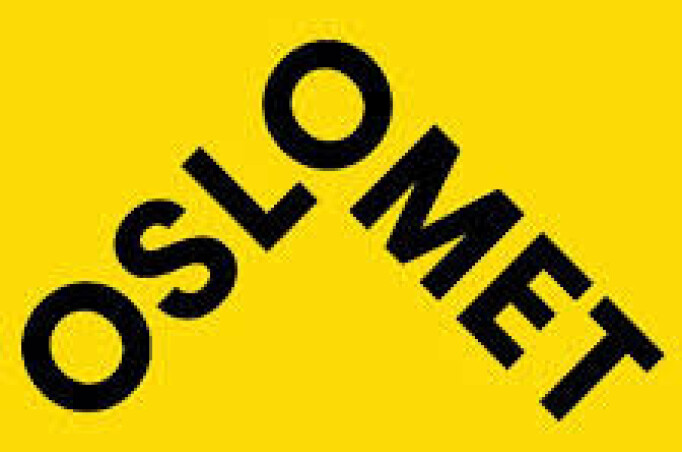THIS CONTENT IS BROUGHT TO YOU BY Oslo Metropolitan University - read more
Norway has a high sickness absence rate – yet some of the lowest unemployment in Europe
Contrary to worries, Norway’s supportive sick leave policy keeps people healthy and financially secure while supporting a robust workforce.

Norway has some of the best sick leave benefits in the world.
Workers receive full pay and the flexibility to make responsible decisions for their health and job.
Norway also has the highest rate of people using sick leave. This has made some wonder whether the benefits are too high.
Kjetil van der Wel, a professor at OsloMet, says that these worries are unfounded. In fact, his research shows that these benefits not only keep people healthy and financially secure, they actually encourage people to remain in the workforce.
How sick leave works in Norway
When you get sick in Norway, you have the right to 100 per cent compensation. You simply report that you are sick and continue to collect your pay.

A longer absence requires a note from your physician. Your employer covers the cost of the first two weeks and then the state steps in if you are sick for longer.
Managing illness is a conversation between you, your physician, and your employer.
Professor van der Wel is a sociologist who studies how welfare programmes like this one support people. He says that we should think of sick leave benefits as part of the broader social welfare system.
It is an arrangement built on trust that helps create good living and work conditions.
One of the main benefits of sick leave support is that it keeps sick people in the workforce.
Keeping sick workers in the workforce
Van der Wel points out that this flexibility allows someone to take time off when they are unwell while still keeping their job. This benefits employers as well, since they don’t need to spend time and money finding a replacement worker.
It also enables people with chronic illnesses or disabilities to remain in the labour market. Overall, these sick leave policies offer significant benefits to the economy.
“Illness can have quite harsh economic consequences for families, particularly for families in the lower income groups,” says van der Wel.
Norway’s sick leave benefits mean that families don’t become destitute if one of the breadwinners gets sick. This reduces welfare costs in the long term and creates better opportunities for children in affected families.
Norwegians take the most sick leave
Norway’s National Registry helps researchers like van der Wel understand how people use sick leave.
It includes statistics such as benefit amounts, time to return to work, and the number of days people take off. This last value, which shows that Norwegians take more sick leave than any other country in the world, has sparked concern among employers and policymakers.
Some worry that generous benefits will make people detached from work or take advantage of the system. If this were the case, we would expect to see a long-term undermining of the national work ethic and lower employment rates, especially among youths.
“It’s an intriguing story, but it doesn’t add up with the statistics,” says van der Wel.
Sick leave supports the economy
His research indicates that Norway’s high sickness absence rate and substantial benefits do not hinder labour market participation. Rather, they contribute to maintaining high employment levels.
The sickness absence level and sick pay arrangements in Norway have coexisted with high employment for over 30 years. In that time, employment rates have remained steady, and the proportion of young adults with good careers has increased.
Norway even boasts some of the lowest unemployment rates in Europe.
Norway’s work ethic remains strong too. In one of his studies, van der Wel found that 79 per cent of Norwegians said they would enjoy having a paid job even if they did not need the money – compared to less than 50 per cent in Spain and only 23 per cent in the Czech Republic.
“The potential of generous sickness benefits to ruin work ethic and create welfare dependency is overstated” he says.
An international example
Norway stands out from other European countries. The benefits are high, and more people take sick leave. However, van der Wel points out that the actual number of people on welfare benefits in Norway is average for Europe.
The difference, he says, lies in the level of support.
Because of this support, Norway is considered one of the best countries to live and work in. The poverty rate is low, and there are fewer social problems. Van der Wel argues that the requirement for employers to pay early-stage sick leave benefits also encourages better working conditions, especially for manual labour jobs.
In contrast, many other European countries have more people on welfare – they just aren’t getting the same benefits.
As van der Wel notes, "simply because people in other countries aren’t on sick leave doesn’t mean they aren’t sick, just that they have to rely on social assistance or other benefits."
Room for improvement in a strong system
While Norway’s sick leave benefits are strong, van der Wel and other researchers still see room for improvement.
Norway spends around 60 billion NOK (about 5.9 billion USD) each year on sick leave, and this is likely to increase as the population ages.
There is also a disparity in who takes sick leave, with women and lower-educated workers taking more. One of the biggest concerns is maintaining trust in the system so that it can continue to benefit the population.
These are all achievable goals.
Van der Wel says the benefits of sick leave far outweigh the costs. They help maintain a strong workforce and promote better working conditions. These benefits are popular and supported by politicians, workers, and unions. They are a part of what makes Norway an attractive place to live and work.
References:
Dahl, E. & van der Wel, K.A. Educational inequalities in health in European welfare states: a social expenditure approach, Social Science & Medicine, vol. 81, 2013. DOI: 10.1016/j.socscimed.2012.12.010
Heglum, M. Transformed ‘postmodern’ life courses? Continuity and change in young adults’ labour market trajectories in Norway, European Sociological Review, vol. 40, 2024. DOI: 10.1093/esr/jcad043
Nordheim, O. & van der Wel, K.A. Are there diminishing returns to social spending? Social policy, health and health inequalities in European countries. A comparative longitudinal survey data analysis, Social Science & Medicine, vol. 380, 2025. DOI: 10.1016/j.socscimed.2025.117721
Van der Wel et al. Risk and resilience: Health inequalities, working conditions and sickness benefit arrangements: An analysis of the 2010 European Working Conditions survey, Sociology of Health & Illness, vol. 37, 2015. DOI: 10.1111/1467-9566.12293
Van der Wel et al. Social inequalities in ‘sickness’: European welfare states and non-employment among the chronically ill, Social Science & Medicine, vol. 73, 2011. DOI: 10.1016/j.socscimed.2011.09.012
Van der Wel, K.A. & Halvorsen, K. 'The bigger the worse? A comparative study of the welfare state and employment commitment', Work, Employment and Society, vol. 29, 2015. DOI: 10.1177/0950017014542 (Abstract)

This content is paid for and presented by OsloMet
This content is created by Oslo Metropolitan University's communication staff, who use this platform to communicate science and share results from research with the public. Oslo Metropolitan University is one of more than 80 owners of ScienceNorway.no. Read more here.
More content from OsloMet:
-
Researcher: Local government was key to managing the pandemic
-
"Norwegians practice a friendship version of a ‘one-night stand'"
-
"We need to talk about how we assess teacher students"
-
Cannabis use in Norway has increased: “Not everyone needs moral lectures or worried looks"
-
Many children with ADHD do not thrive at school
-
An out-of-control race: Why we fear artificial intelligence




































